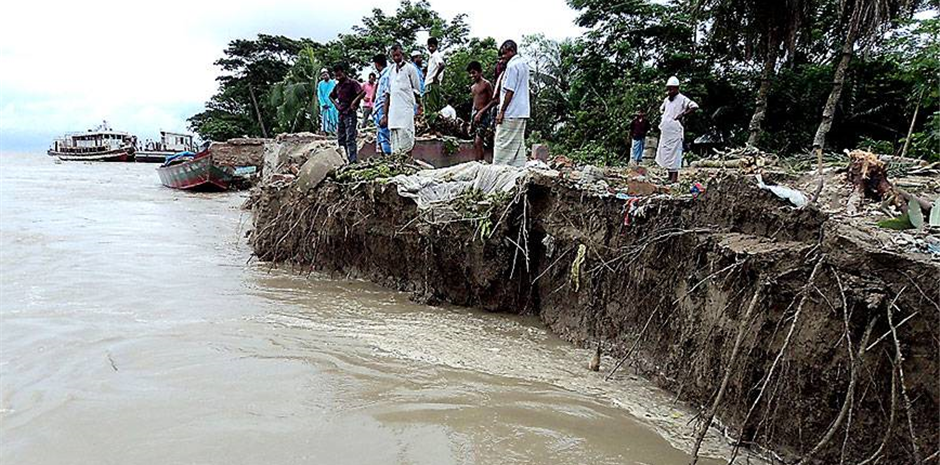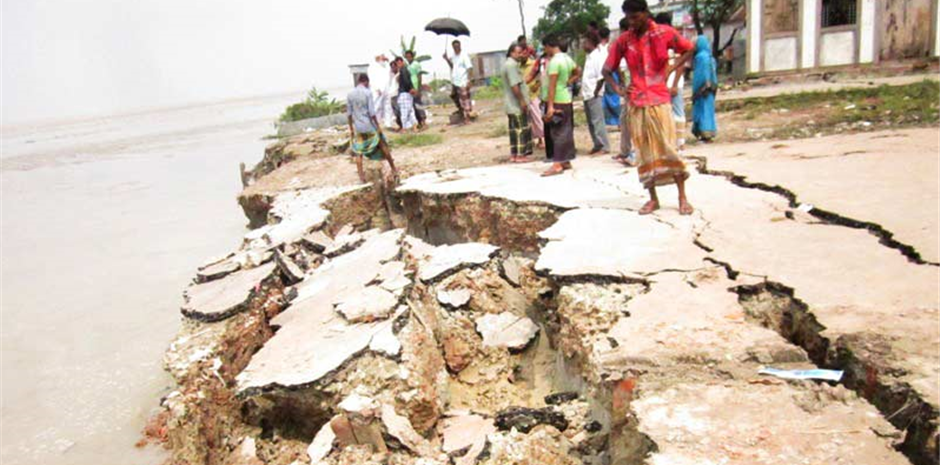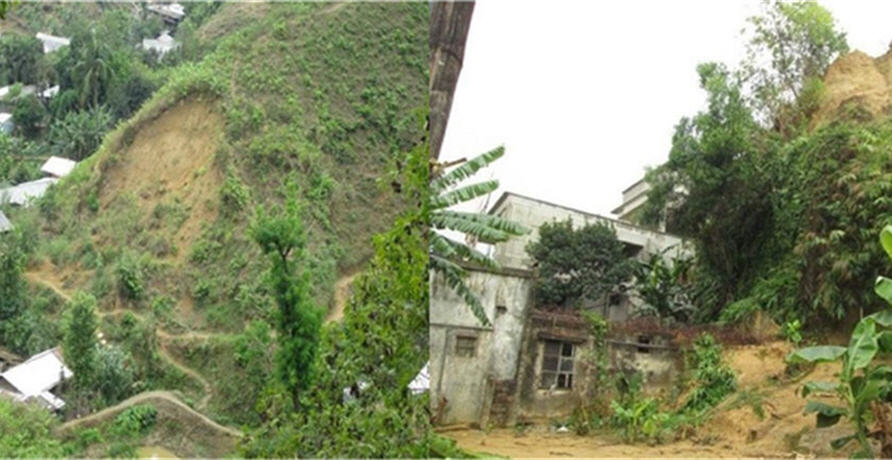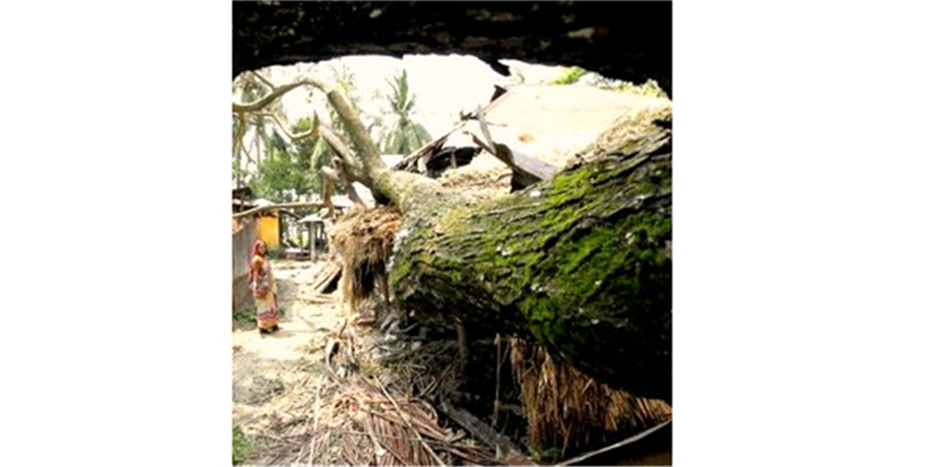Padma Erosion of Islampur, Kustia.
Khulna, Bangladesh
River erosion in Bangladesh is no less dangerous than other sudden and devastating calamities. Losses due to river erosion occur slowly and gradually. Though losses are slow and gradual, they are more destructive and far-reaching than other sudden and devastating calamities.
The effects of river erosion are long-term . It takes a few decades to make up the losses, which a family has incurred by river erosion. There has been little progress, however, for improving the lives of erosion-affected people due to resource constraint.
Rivers in Bangladesh are morphologically highly dynamic. The main rivers are braided, and form islands or chars between the braiding channels. These chars, of which many are inhabited,"move with the flow" and are extremely sensitive to changes in the river conditions.
Erosion processes are highly unpredictable, and not compensated by accretion. These processes also have dramatic consequences in the lives of people living in those areas.
A study concluded in 1991 reported that: out of the 462 administrative units in the country, 100 were subject to some form of riverbank erosion, of which 35 were serious, and affected about 1 million people on a yearly basis. Around 10,000 hectares land is eroded by river per year in Bangladesh (NWMP, 2001).
As we visited Islampur at Kustia the newly made school was totally damaged by the cope of Padma(river) and this was a total disaster and many people as well as children were left in an education less situation.
Major rivers such as the Brahmaputra, the Padma and the Meghna consume several thousand hectares of land on both sides of their banks making thousands of people landless and homeless every year.
In addition to agricultural land and homes, each year Bangladesh loses several kilometres of roads and railways, along with flood embankments. Some major cities and towns such as Chandpur, Rajshahi and Faridpur are also threatened by erosion.
While the rate of erosion along the major rivers may vary from one period to other, during the last three decades the Brahmaputra and the Padma rivers have consumed 180,000 hectares of agricultural land.
From the 1970s to early 1990s the extent of mean annual erosion was about 3,300 hectares along both banks of the River Jamuna. During the last decade erosion along the river seems to have diminished slightly ranging from 1,000 to 2,500 hectares per year.
The mean annual erosion along the River Padma was 1,400 hectares per year while it increased to 2,200 hectares per year in the 1990s, according to the WDB.
"The current flooding eroded 140km of river bank fully and another 1,345km partially," A.K. Azad, chief of monitoring for the government's Water Development Board (WDB), said.
"The floods also completely eroded 17km of flood protection embankments, and another 48km partially, across the country. The assessment on 19 September showed 313 structures, such as irrigation sluice gates and culverts, were damaged by river erosion," he said.
The WDB estimates the damage caused by erosion at more than US$75 million.
Monzur Hossain, director-general of the Flood Situation Monitoring Cell at the chief adviser's office, estimates infrastructural damage at over $240 million, with the floods affecting 28.5 million families in 263 sub-districts within 46 affected districts.
The flood damaged 6,189km of non-metal rural roads, 7,524km of rural roads and 1,323 bridges and culverts, the chief adviser's report said.
River erosion can have devastating economic effects.
Over the past four weeks the Arial Khan has moved a few hundred metres westward, eroding a swathe of agricultural land along 50km of its bank from Tarabunia to the Mangal Majhi ferry launch.
Reports gathered by IRIN from affected districts confirm that river bank erosion has got much worse along the Padma and its distributaries in the western, south and south-central regions of the country.
The River Brahmaputra is also causing large-scale erosion in the Sirajganj, Bogra and Kurigram, Jamalpur and Tangail districts in the north, northwest and north-central regions of the low-lying nation. At the same time, the Dhaka-Sariatpur highway, one of the major roads that link Dhaka with the south-central region, is also under threat.
Such nightmares haunt 60-year old Haji Yasin Ali of Farazi Kandi, a nearby village. Just three years ago, the same river devoured their family home, as well as the local mosque - prompting him to move his family to Kadamhati village where his in-laws live.
Today, Haji Yasin is among some 60 villagers rendered homeless by erosion in the villages Duttapara and Sanyasir Char of Shibchar - and the Arial Khan shows no sign of relenting. As we saw there.








